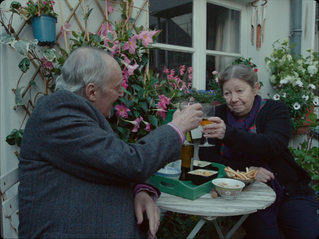The Dizzyingly Grotesque Fabric of Mulholland Drive
- Jessica Moore

- Apr 16, 2019
- 2 min read
Updated: Jan 5, 2021

Everything contained within Mulholland Drive seems ornamental and meticulously arranged, its creativity stylised with mystery at its core. Electricity whirs around every static object, and its terrified audience is reminded that this is just a film, just a film, ‘just a tape’. As its narrative follows a hopeful actress and an amnesiac through fractured realities of Hollywood, Mulholland Drive becomes an apparition that progressively retracts further in on itself and away from its own construction of reality. And by the film’s end—also understood as its beginning—we arrive at its internal, twisted centre.
Though it exhibits a familiar devotion to insatiability and a fervency for neo-noir that characterises Lynch’s repertoire, Mulholland Drive is considered, by some, the apex of his career. Lynch rather consistently produces films which are distinctly hypnotic in their half-conscious, disorientating terrain, though here these qualities are especially refined and feminised.
Mulholland Drive presents an exhibition of sacrifice that surpasses its precursors. It is a highly dramatised annihilation of cinematic convention and narrative formula, made visible by its replacement with illogic and impulsion. Enervated and disturbed by this disorder, its audience uncovers something compellingly insidious that permeates the entangled, fatalistic lives of Betty/Diane (Naomi Watts) and Rita/Camilla (Laura Harring), though they aren’t ever certain what that something is.
Mulholland Drive illuminates an instability of perception, narratively and meta-cinematically. It is both empty and overflowing, insufficient and intoxicating. Its audience is pulled through a temporal and spatial kaleidoscope with unnerving rapidity. They are constantly tempted and perplexed; tempted by whatever is in that blue box, perplexed by the converging beginning and end, though both threads of speculation yield more unanswered questions.
Theorising the narrative requires a process of abstraction. It is exhaustively unending, as affirmed by its cult following, to try and piece this film together in a way that mirrors our own conceptions of linearity and experience, and this is its ingenuity. Mulholland Drive doesn’t capture realism, rather it captures a perversion of realism and its uncharted spaces, along with its literal and continual assertion that it is a film; it is abstract art. This formal ‘off’ness compliments the queer undertones and its femininity. The enmeshed identities of Rita and Betty obscure the presence of queer romance, but not to the point of illegibility. It takes romance and desire and totally subverts their power. Bodies are unrecognisably blurred between reality and corrosive death; sex is not a language of connection but of fatality.
Mulholland Drive challenges technical and critical aspects of filmmaking. Lynch dangles a narrative before his audience yet resists quenching their appetite for familiarity. He poses questions rather than answers, offers intrigue rather than information. Though to call this film a master of intrigue would inhibit its complexity, and limit its creativity. Rather, Mulholland Drive captures all that is excellent in filmmaking by honing in on its antithetical, darker ego. It robs its audience of security and linearity, it redefines how we consume film and generates a crowd of infiltrators who peer inside a private, perplexing game between Lynch and cinematic meaning.










Comments